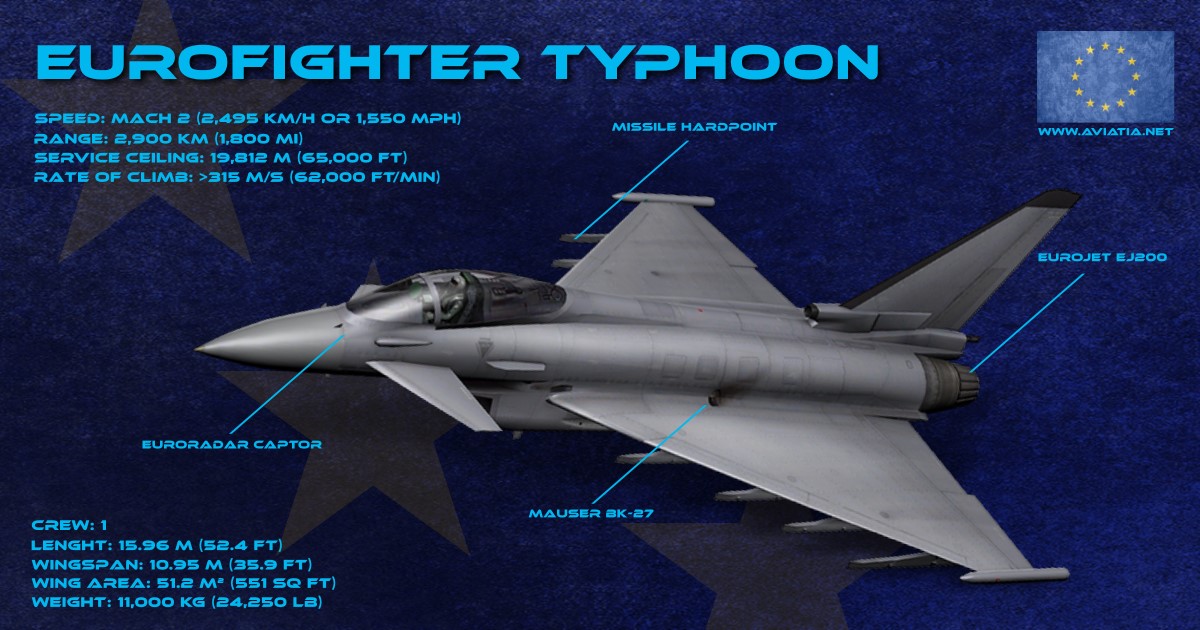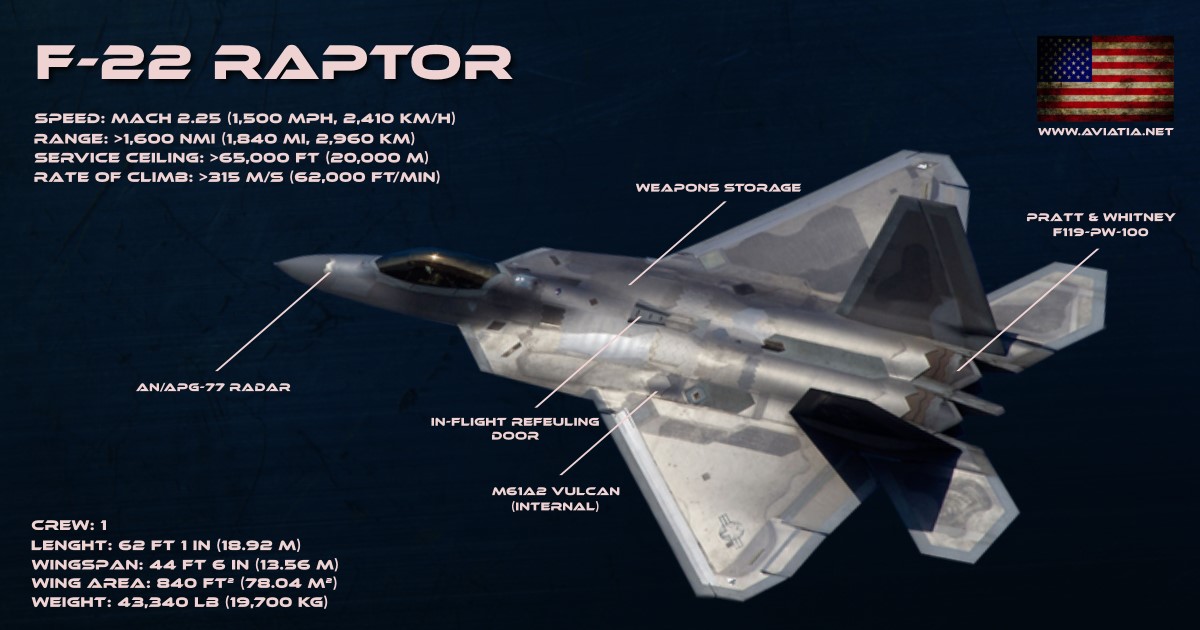Eurofighter vs F-22
F-22 Raptor vs Eurofighter Typhoon
Comments of readers (Feel free to leave a reply on bottom.)
1. All the USAF gotta do is buy a couple of the Eurofighter planes and take it back to the US. Put the best USAF pilot in the Typhoon and put the best fighter pilot in the Raptor and exploit all the weakness of the Typhoon. Which I think the US is doing already. In my opinion the us fighter technology is far more advance than the Europeans. We are using unmanned aircraft where the “G Force” limitations are the airframe itself and not the pilot. Eurofighter Typhoon has a pilot which is limited in manuverability where the unmanned aircraft can pull more “G’s” than the Typhoon fighter.
2. Eurofighter Typhoon is the only Fighter in the world, to stand a fighting chance against the F-22 Raptor. At least until a fully operational PAK FA is available. Sadly the TVC variant of the Typhoon will probably never come true. It would just add even more to the price of the Typhoon and there isn’t really a demand for it. Anyways, the BVR combat is the only thing the F22 Raptor has got a major advantage through stealth. So the conclusion of this comparison is BS. Dogfight chances definitely depend on scenario. High subsonic speeds benefit the Typhoon. Everything else favors the F-22 Raptor. Eventually it would all depend on, where these two wold meet. If 1 on 1 in neutral airspace.
The typhoon has its fighting chance. If it can get close enough through jamming, it’s maybe only 40/60 against the Typhoon. If a whole flight of Raptors meets a flight of Typhoons, the Raptors will eat their advisories for breakfast. RCS of typhoon from all angles but frontal is so high, that the raptors would have launched missiles, before the typhoons even know, the raptors are around. If typhoons have to penetrate F22 airspace, the outcome is even worse for the typhoons. If the raptors receive enemy location and targeting information from awacs or ground radar, Typhoon is lost. much more interesting to compare would be, how maintainable the planes are over time.
To maintain just the stealth of the raptor alone, is so costly and time consuming, that the typhoon is the better plane after all. It is an awesome a2a fighter with good low observability and sophisticated a2g capabilities. It is expensive (though cheap compared to the raptor), but maintainable, if an Air Force sees the need an is willing to pay for and maintain it. While the raptor is hardly maintainable, even for the USAF. And only through sacrificing numbers and pilot training to such an extend, that it is questionable how valuable the F22 fleet would be, in a real future conflict.
3. At a distance of about 50 km the Typhoon IRST (Infra-Red Search and Track) system is capable to find even a stealthy plane “especially if it is large and hot, like the F-22″ a Eurofighter pilot said.
Anyway, the Typhoons scored several Raptor kills during the Red Flag Alaska. On one day a German pilot, recounting a succesfull mission ironically commented: “yesterday, we have had a Raptor salad for lunch.”, and if you want use BVR weapons, try the MBDA Meteor.
4. America is becoming overly dependent on advanced electronic warefare. China and Russia will develop directed energy weapons to use against our flying computers that will render them utterly helpless. Our aircraft will be made to simply fall from the sky or flail uncontrollably until easily picked off. Sometimes simplicity will dominate complexity. Our leadership is overly confident on technology.
5. The modern amraams that the F22 would use have a range of at least 100 miles, double the 1990’s era figure given here. Also, stealth is not factored in. The F 22 has about 1/1000 the rcs of an EF 2000, meaning the two are not even comparable in an engagement.
6. The Eurofighter is not an upgraded F-15 its pretty close and some aspects better than an F-22 the only thing the F-22 has over it is stealth and thrust vectoring which makes it a better dog fighter. The F-22 has a higher chance of winning which is the most important so that why I would choose the F-22 over the eurofighter just for that reason. But in all the eurofighter is a very close second.
7. Unclassified range for F22s radar has range of 200-240 km against 1m2 target. As Typhoon’s frontal RCS is 0,25 – 0,75 m2, it means that F22 can detect it from 141 – 223 km. However, in exercises, F22 was not able to lock on to Typhoon until latter was 32 kilometers away due to jamming. Typhoon is more maneuverable at high subsonic speeds where TVC isn’t effective.
Eurofighter vs F-22 Flight Cost Per Hour
Overall and BVR ratings
| CATEGORY | EUROFIGHTER TYPHOON | F-22 RAPTOR |
| BVR Rating | 91% | 98% |
| Armament | 8.5/10 | 8.2/10 |
| Technology | 8.8/10 | 10/10 |
| Avionics | 8.6/10 | 9.8/10 |
| Maneuverability | 9.5/10 | 9.4/10 (2D Aerody.) |
| Rate of Climb | max. 315 m/s – 65k ft/min | max. 315 m/s – 62k ft/min |
| Thrust/Weight | 1.15 | 1.26 |
| Service Ceiling | 20 km – 65k ft | 20 km – 65k ft |
| Speed | 2.35 Mach | 2.25 Mach |
| Fuel Economy | 0.68 km/l – 1.60 NM/gallon | 0.47 km/l – 1.10 NM/gallon |
| Unit Cost | 175.000.000 USD | 250.000.000 USD |
| Overall Rating | excellent | excellent |
BVR (Beyond Visual Range) Ratings
| CATEGORY | EUROFIGHTER TYPHOON | F-22 RAPTOR |
| BVR AAM missile | MBDA Meteor | AIM-120 AMRAAM |
| AAM origin | NATO | USA |
| Year | in 2013 | in 1997 |
| Range (mile) | 62 | 45 |
| Range (km) | 100 | 75 |
| Speed (mph) | 2640 | 2640 |
| Speed (km/h) | 4248 | 4248 |
| Radar | Euroradar CAPTOR | AN/APG-77 |
| Radar overall rating | excellent | excellent |
| BVR Technology | 87% | 98% |
| BVR Def. Tech. | 85% | 99% |
| RCS – Radar Cross Section | 0.5-2.0 | 0.0001-0.4 |
Dogfight (close to medium range) Ratings
| CATEGORY | EUROFIGHTER TYPHOON | F-22 RAPTOR |
| Cannon | Mauser BK-27 | GAU-22/A |
| Caliber (mm) | 27 mm | 20 mm |
| Rate of Fire (rpm) | 1700 rpm | 4200 rpm |
| Muzzle Velocity | 1025 m/s | 1000 m/s |
| Size Point 10%-30% | 20% | 20% |
| Maneuverability | 9,5 | 9,4 |
| Thrust/Weight Ratio | 1,15 | 1,26 |
| AAM (first) | AIM-132 ASRAAM | AIM-9X |
| Operational range | 0.3 – 50 km | 0.2 – 50 km |
| AAM (second) | IRIS-T | AIM-9X |
| Operational range | 0.5 – 30 km | 0.2 – 50 km |
| Dogfight Rating | 75% | 86% |
Size Comparison
| CATEGORY | EUROFIGHTER TYPHOON | F-22 RAPTOR |
| Length | 15.95 m – 52 ft 4 in | 18.9 m – 62.0 ft |
| Wingspan | 10.95 m – 35 ft 9 in | 13.6 m – 45 ft 0 in |
| Wing area | 51.2 m² (551 sq ft) | 78.0 m² – 840 sq ft |
| Height | 5.30 m – 17 ft 3 in | 5.08 m – 16.8 ft |
| Weight | 11,150 kg – 24,6k lb | 19,700 kg – 43,5k lb |
| Power | 2 x 89 kN 20k lbf | 2 x 153 kN – 35k lbf |




